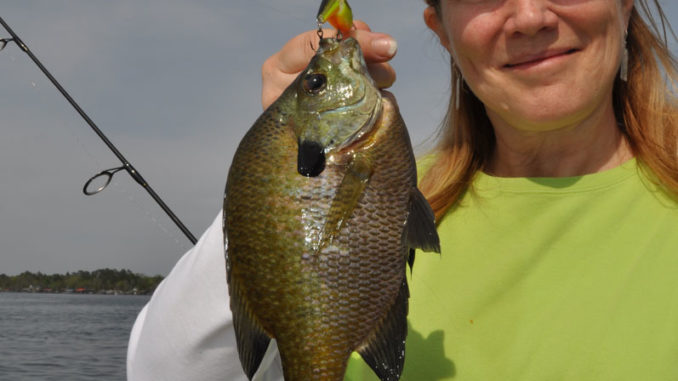
Troll or cast in shallow, clear White Lake, and there’s no telling what might bite back.
For the past several years, Butch Foster of Southport has been making regular fishing trips to White Lake. Normally, Foster specializes in taking saltwater anglers far out into the ocean — he owns Yeah Right Charters — but he is also an avid freshwater fisherman, using a skiff to access some of the inland lakes in southeastern North Carolina.
“I come to White Lake because it reminds me of the lakes I used to fish when I lived in the Piedmont,” he said. “It doesn’t have the numbers of bass of High Rock and doesn’t have any crappie. But the bass are big and fat, and the yellow perch take the place of the crappie I loved to catch.
“I hope we catch some yellow perch. They are one of the best eating fish in freshwater.”
White lake is a beautiful, 1,092-acre natural lake, a “Carolina bay” with no inlet or outlet. With the exception of Lake Waccamaw, Carolina bay lakes are extremely acidic. White Lake’s pH has been as low as 3.7, according to some surveys by the N.C. Wildlife Resources Commission. A lot pH inhibits nutrient uptake by plants, and its relatively lack of vegetation makes White Lake’s waters extremely clear.
While impaired plant growth makes it less hospitable than many other lakes to certain species of fish, it hosts native species, including the chain pickerel and yellow perch, that are adapted to its crystal-clear waters and high acidity, along with other species such as largemouth bass and bluegill.
Michael Fisk, a fisheries biologist with the Commission, said the pH last April was between 4 and 5. “A pH of 6 to 7 is optimal,” he said. “Any pH below 5 is very acidic and results in low productivity.”
However, Fisk said a 2013 electroshocking survey of White Lake turned up some pretty nice fish.
“During the 2013 survey, they collected some decent bass,” Fisk said. “In a Carolina bay lake, you expect to see low abundance and poor condition ratings. However, they caught 66 largemouth bass — a catch per unit of effort of 40 fish per hour, which is good for a Carolina bay lake. You might see 100 fish per hour in a good Piedmont lake The largest bass weighed just over five pounds, and 27 of them were 14 inches and above. The survey also caught six bluegill sunfish, some of which weighed three-quarters of a pound. In lakes with low abundance, individual fish can grow larger because of reduced competition.”
The 2013 electroshock survey did not turn up any yellow perch and chain pickerel or “jackfish.” However, those indigenous species are what draws Foster to the lake.
Fisk said pickerel and yellow perch spawn earlier and in cooler water temperatures than bluegills and bass, which keep them out of the shallows while the electroshocking is typically taking place. Yellow perch spawn when the water temperatures are in the 50s. They release their eggs above or inside beds of submerged vegetation, to which the sticky eggs attach. The larvae then hide in the vegetation until they reach a size where they can swim freely and find prey in open water.
“I can use my depth finder to locate perch when they are in the grass beds,” Foster said, “but I use it mostly to keep track of the depth at which they are biting the best. The deepest place I’ve found is 10 feet, and the perch are usually biting in seven to eight feet of water, although they can school in deeper water. If you can tune your depth finder sharply enough, you can see the perch go down into the grass then come back up. The water is so clear that if the sun is shining just right, you can look down and see an entire school of perch chasing your lure. It’s not unusual to catch two perch on a lure at the same time.”
Foster likes to troll No. 5 Fat Raps and No. 5 Shad Raps on ultralight spinning outfits. He started one February day when the surface temperature registered 55 degrees. He began catching yellow perch, but most were smaller than he wanted to eat. He moved to the deeper water, and when his hooks began to foul with vegetation he changed to the same lures in Nos. 3 and 4 sizes.
Foster said ultralight spinning tackle is a great way to squeeze the most fun out of catching yellow perch. His reels were spooled with 10-pound braid or 6-pound monofilament with a 6-pound mono leader tied to the braid to reduce visibility.
It didn’t take long for Foster’s change to the smaller lures to pay off. One of his reels sang out as a big fish struck and started taking line. At first, the heavy fish merely pulled the rod down. However, after Foster applied some pressure by reeling in line and pumping the rod, the fish jumped.
“Look at that largemouth,” he said. “He probably weighs five pounds.”
The fish was a sluggish in the cool water, but put up a good fight, especially when it neared the boat. Rather than lip-lock the fish with his thumb and forefinger, Foster used a landing net to corral it. He said the ultralight tackle and the tiny hooks make it difficult to control larger fish.
Before the day was over, Foster boated a half-dozen more bass, with the two biggest bracketing the 5-pound mark. He caught several bluegill that were eight to 10 inches long, but mostly, he caught yellow perch measuring six to 12 inches long. The ice chest filled steadily, with fish tails tapping out a rhythm whenever he added to his catch. Then, another big fish struck.
“This is too heavy to be a yellow perch,” he said. “We had better put the motor in neutral.”
The wind was blowing hard enough to keep the lines of the other rods tight with the engine switched off. Foster fought the fish with his flimsy, 5-foot rod bent into the shape of a “C.”
“Watch out, he’s going to jump!” he shouted. “It’s a jackfish.”
The fish cleared the water, its chain-mail markings dark against light green flanks. When the fish jumped, it opened its jaws and shook its head, trying to dislodge the lure. Soon, the tired fish soon was swirling the water beside the boat.
“Get the net,” he said. “I don’t want that one to get away.”
He netted the fish, which weighed more than three pounds. Carefully, he extracted the lure using pliers, avoiding the sharp teeth. As he continued trolling for perch, he caught three more chain pickerel that topped two pounds apiece.
At the end of the day, Foster demonstrated how he filets chain pickerel, which have tiny, sharp Y-bones that are so hard to deal with most other anglers won’t eat them the fish.
“You lay the filet skin side down and feel for the bones sticking up, then cut to the outside of them and down until you feel them as they curve,” he said. “Then you turn your blade and cut to the outside. Do the other side the same way and you lose a narrow strip of meat in the middle, but you don’t have to worry about bones sticking in your throat. You wind up with narrow strips, rather than wide filets, but they are easy to fry and eat.”
Fisk said the lake is popular with local anglers because it gives them a different type of fishing. Most area anglers are hitting the nearby Cape Fear River for shad and catfish early in the year. Of all the Carolina bay lakes, only Lake Waccamaw is likely to have better fishing.
“It’s a different kind of fishing than rivers fishing,” he said. “White Lake doesn’t have high numbers of bass, but some of them are so fat, they look like footballs. It might not be worth the drive if you live near one of the better Piedmont lakes, but if you live nearby, it is a good option.”
DESTINATION INFORMATION
HOW TO GET THERE/WHEN TO GO — From Raleigh, take I-40 to Newton Grove, then take Exit 343 to US 701 south to White Lake. The best boating access is from White Lake Water Sports & Marina 0.8 miles west of the intersection of US 701 and NC 41. From the coast or points to the northwest, take NC 87 to Elizabethtown and US 701 to White Lake. The fishing starts to pick up in February and is good through April; after that, pleasure-boat traffic picks up to an extremely high level.
BEST LURES/TECHNIQUES — For bass, Lucky Craft Pointer, Rapala Shad Rap, Fat Rap and X- Rap in color patterns that imitate spawning yellow perch and largemouth bass. Try oranges, yellows and bright greens.
FISHING INFO/GUIDES — White Lake Water Sports and Marina, 910-872-5253; Capt. Butch Foster, Yeah Right Charters, 910-845-2004. See also Guides and Charters in Classifieds
ACCOMMODATIONS — Motel 6, Elizabethtown, 270-769-3102.
MAPS — DeLorme North Carolina Atlas and Gazetteer, 800-452-5931 or www.delorme.com.

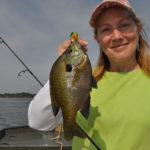
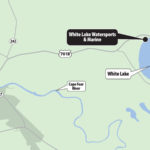
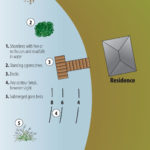
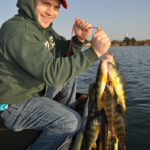
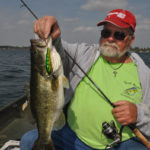



Be the first to comment